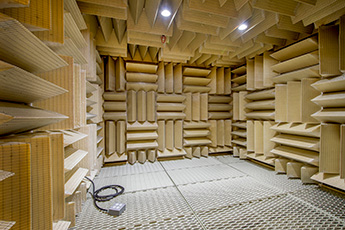It’s said that a rising tide lifts all the boats. The phrase is commonly attributed to the late President John F. Kennedy, as he used it during a 1963 speech. However, the saying traces back to a phrase Kennedy’s speechwriter, Ted Sorensen, had noticed at a New England Council regional chamber of commerce. It’s likely the origins of the saying can be followed even further into history, but no matter its original source, the intention behind it remains the same: a broader effort to improve the economy can benefit a greater amount of people. Yet, the rising tide might raise some of the boats more than others, depending on where those boats are anchored. Many community financial institutions (CFIs) have struggled in recent years to grow deposits while keeping costs in check. As competition intensifies, the institutions that succeed will be those that take a more strategic and segmented approach. In Part 1 of our deposit growth series, we explored five creative ways CFIs can attract new deposits without raising rates — focusing on community engagement, digital convenience, product innovation, and customer loyalty. In this second and final installment, we shift to the commercial side — where nuanced strategies, data insights, and client segmentation can help CFIs grow their business deposit base more effectively.Total deposit balances in US banks dropped by 7% between Q1 2022 and Q3 2023, reflecting broader headwinds for financial institutions. However, commercial balances rose 2% between Q3 2023 and Q1 2024, according to a 2024 McKinsey report. Analysts expect continued gains through 2025, giving CFIs a window to refine and expand their approach.To capitalize on this trend, CFIs may want to consider shifting from broad rate-based tactics to more targeted, relationship-oriented strategies. Below are five practical ways to strengthen and grow your commercial deposit base.1. Strengthen Primary Banking Relationships
Customers with a full-service relationship generate far greater value — up to 20% higher ROE — than lending-only clients. Make deposit relationships a core part of your business banking model by cross-promoting treasury services, cash management, and account bundling.One effective tactic: tie deposits to lending. Requiring a deposit relationship as part of a lending package can be mutually beneficial. It simplifies payments for the borrower and broadens the relationship for the CFI. It also gives your institution better visibility into the business’s liquidity patterns. 2. Use Earnings Credit Rate (ECR) Accounts Strategically
ECR accounts can be a powerful tool for deepening commercial relationships and mitigating rate sensitivity. Business clients that use earnings credits to offset fees on services like treasury, ACH, and wire transfers are typically less focused on rate alone, making them more stable depositors.These accounts effectively shift the conversation from “What rate can you give me?” to “How can I maximize value with your services?” That dynamic not only supports retention — it can also reduce pricing pressure across your broader deposit portfolio.To get the most from ECRs, CFIs should regularly evaluate fee-based service usage, monitor credit utilization, and explore ways to bundle ECR offerings with treasury or cash flow tools that increase business stickiness.3. Segment by Industry
Not all business sectors behave the same when it comes to deposit pricing and relationship depth. Understanding these differences is key to optimizing your commercial deposit strategy.
Customers with a full-service relationship generate far greater value — up to 20% higher ROE — than lending-only clients. Make deposit relationships a core part of your business banking model by cross-promoting treasury services, cash management, and account bundling.One effective tactic: tie deposits to lending. Requiring a deposit relationship as part of a lending package can be mutually beneficial. It simplifies payments for the borrower and broadens the relationship for the CFI. It also gives your institution better visibility into the business’s liquidity patterns. 2. Use Earnings Credit Rate (ECR) Accounts Strategically
ECR accounts can be a powerful tool for deepening commercial relationships and mitigating rate sensitivity. Business clients that use earnings credits to offset fees on services like treasury, ACH, and wire transfers are typically less focused on rate alone, making them more stable depositors.These accounts effectively shift the conversation from “What rate can you give me?” to “How can I maximize value with your services?” That dynamic not only supports retention — it can also reduce pricing pressure across your broader deposit portfolio.To get the most from ECRs, CFIs should regularly evaluate fee-based service usage, monitor credit utilization, and explore ways to bundle ECR offerings with treasury or cash flow tools that increase business stickiness.3. Segment by Industry
Not all business sectors behave the same when it comes to deposit pricing and relationship depth. Understanding these differences is key to optimizing your commercial deposit strategy.
- Lower-rate sectors — such as education, public administration, and professional services — tend to earn below-average deposit rates. These industries often have lower loan-to-deposit ratios, which may make them more attractive for funding but less active on the lending side.
- Higher-rate sectors — including retail, finance, and manufacturing — typically require more robust lending relationships and may command above-market deposit pricing in return.
CFIs that cultivate a diverse mix of industries can avoid concentration risk, better align pricing with relationship value, and ensure long-term stability. Knowing where each client segment fits on the risk-return spectrum helps tailor offerings that balance deposit stickiness with profitability.4. Identify Loyal, Less Rate-Sensitive ClientsSome of your customers might stay with you even if the rates you pay them are a little below market average. Those clients are invested in their relationship with you, value your expertise, and aren’t going to move from institution to institution to chase rates. Pinpointing those clients based on factors like tenure, transaction data, or the number of your products they use from you can help you focus on those customers to keep their deposits sticky.5. Tailor to Rate SensitivityMcKinsey’s commercial deposits analytic team looked at more than $1T in commercial deposits and how they fared as interest rates rose and fell. Which clients were more sensitive to rate changes? They found that the business clients most likely to move their money to another financial institution are those that have interest rates 100bp to 150bp below market. Deposits are at risk again for customers that are getting significantly higher-than-average rates, because these clients are likely comparing banks to find the best rates.Commercial deposits are showing signs of recovery — but not all deposits are equal, and not all clients behave the same. By combining industry-specific insights, relationship-based product design, and rate sensitivity analysis, CFIs can grow their commercial deposit base in a way that is both strategic and sustainable.




